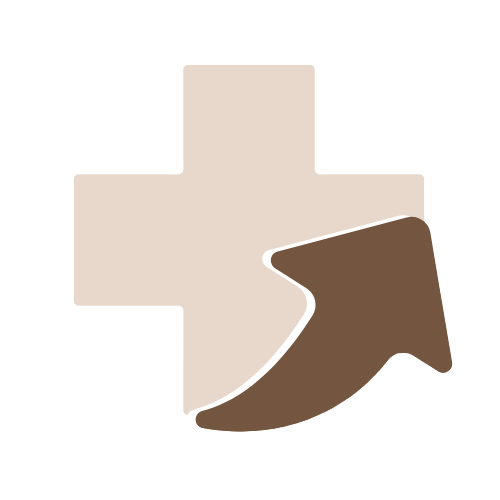Polyarteritis Nodosa
Overview
Polyarteritis Nodosa (PAN) is a rare but serious autoimmune disease that causes inflammation of small- and medium-sized arteries throughout the body. This inflammation leads to damage in blood vessel walls, restricting blood flow to vital organs and tissues, which can result in organ dysfunction and tissue injury. PAN is classified as a systemic vasculitis, meaning it can affect multiple organs at once, including the skin, kidneys, heart, gastrointestinal tract, muscles, and nerves. Without prompt treatment, PAN can be life-threatening, but with proper medical care, many patients can achieve remission.
Causes
The exact cause of Polyarteritis Nodosa is not fully understood, but it is believed to result from an abnormal immune response where the body's immune system attacks its own blood vessels. Several factors that may be associated with the development of PAN include:
- Hepatitis B virus (HBV): A historical association exists between PAN and chronic hepatitis B infection, although this link has become less common with widespread HBV vaccination.
- Hepatitis C virus (HCV): Occasionally associated with PAN in some cases.
- Autoimmune factors: Some cases are idiopathic, meaning no specific cause is identified, but immune system dysregulation plays a role.
- Genetic predisposition: Rare familial cases suggest genetic factors may contribute in some individuals.
- Other infections and triggers: Infections or environmental factors may act as triggers in certain cases.
Symptoms
PAN presents with a wide variety of symptoms because it affects multiple organ systems. Symptoms can be gradual or sudden and include:
- General symptoms: Fatigue, unexplained fever, weight loss, and general malaise.
- Skin manifestations: Purplish rash, nodules under the skin, livedo reticularis (mottled skin appearance), and painful ulcers.
- Muscle and joint pain: Muscle aches (myalgia) and joint pain (arthralgia), often without significant swelling.
- Nerve involvement: Peripheral neuropathy causing numbness, tingling, or weakness, commonly affecting the hands and feet.
- Gastrointestinal symptoms: Abdominal pain after eating, nausea, vomiting, and risk of bowel infarction or perforation in severe cases.
- Kidney involvement: High blood pressure (hypertension) and potential kidney dysfunction, though PAN usually does not cause glomerulonephritis.
- Heart complications: Chest pain or heart failure may occur if coronary arteries are involved.
- Testicular pain: In males, testicular pain or tenderness can be a symptom.
Diagnosis
Diagnosing Polyarteritis Nodosa requires a thorough clinical evaluation and a combination of laboratory and imaging studies:
- Blood tests: Elevated inflammatory markers such as erythrocyte sedimentation rate (ESR) and C-reactive protein (CRP); anemia and elevated white blood cell count may be present.
- Hepatitis B and C screening: Testing to identify possible viral triggers.
- Tissue biopsy: A skin, nerve, or muscle biopsy showing necrotizing inflammation of arteries is diagnostic.
- Angiography: Imaging of blood vessels (usually with CT or MR angiography) may reveal aneurysms, stenosis, or occlusions in medium-sized arteries.
- Urinalysis: To detect kidney involvement, usually showing proteinuria or microscopic hematuria without glomerulonephritis.
- Exclusion of other diseases: Other vasculitides, infections, or autoimmune conditions must be ruled out.
Treatment
Polyarteritis Nodosa is a medical emergency and requires immediate treatment to prevent serious complications:
- Corticosteroids: High-dose prednisone is the mainstay of treatment to reduce inflammation quickly.
- Immunosuppressive agents: Cyclophosphamide or azathioprine may be used in severe or refractory cases to control the immune response.
- Antiviral therapy: If PAN is associated with hepatitis B or C, antiviral medications are included in treatment alongside immunosuppressive therapy.
- Blood pressure control: Antihypertensive medications are often required to manage hypertension, particularly with kidney involvement.
- Pain management: Analgesics for muscle, joint, or nerve pain.
- Supportive care: Nutritional support, physical therapy, and monitoring of organ function are important components of comprehensive care.
Prognosis
The prognosis for Polyarteritis Nodosa varies based on the severity of organ involvement and the timeliness of treatment:
- Favorable outlook with treatment: Many patients experience significant improvement or remission with prompt corticosteroid and immunosuppressive therapy.
- Higher risk without treatment: Without treatment, PAN can lead to severe organ damage and can be fatal.
- Chronic course: Some patients may experience relapses and require long-term management.
- Hepatitis-associated PAN: With effective antiviral treatments, the prognosis of hepatitis B-associated PAN has improved substantially.
- Monitoring is key: Lifelong follow-up is often necessary to monitor disease activity, manage relapses, and screen for treatment side effects.
With early diagnosis and appropriate therapy, many individuals with Polyarteritis Nodosa can lead productive and fulfilling lives, though regular medical care remains essential.
